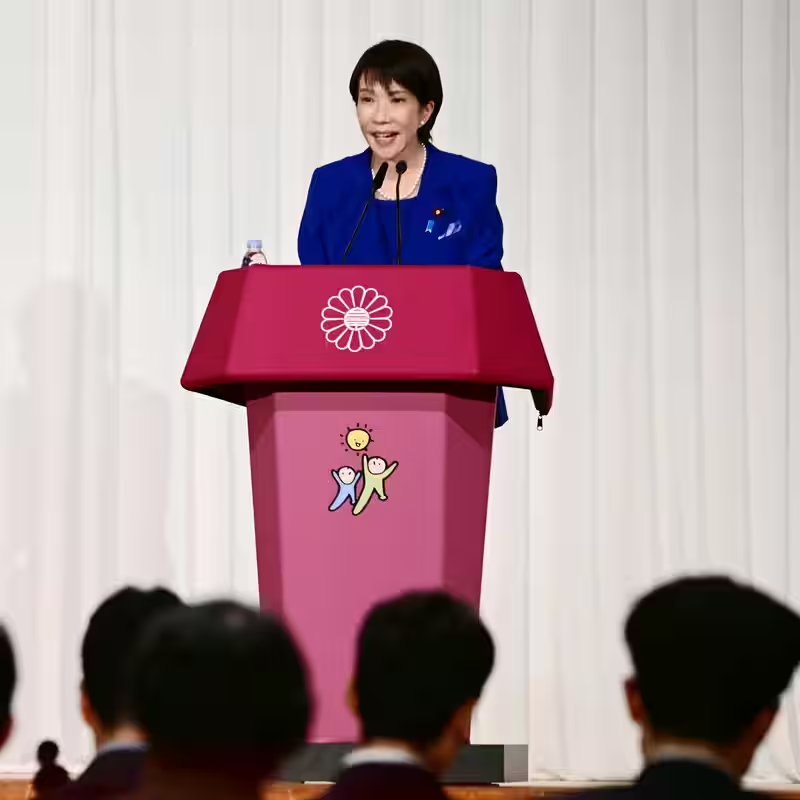Table of Contents
- Takaichi Victory Rocks Markets
- What Is ‘Neo-Abenomics’?
- Yen Plummets, Stocks Rally
- Policy Shifts Ahead for Japan
- Global Implications of Japan’s Pivot
- Sources
Sanae Takaichi’s Unexpected Rise Shakes Japan’s Financial Landscape
In a political upset that sent shockwaves through global markets, Sanae Takaichi emerged victorious in Japan’s Liberal Democratic Party (LDP) leadership race on Saturday—putting her on a clear path to become the country’s first female prime minister. By Monday morning, the reaction was swift and dramatic: the yen plunged to multi-decade lows while the Nikkei 225 surged nearly 4% .
Investors interpreted Takaichi’s win as a green light for a return to aggressive stimulus policies reminiscent of Shinzo Abe’s era—dubbed “Abenomics”—but with a modern, even bolder twist: “neo-Abenomics.”
What Is ‘Neo-Abenomics’?
Takaichi, a longtime protégé of the late Prime Minister Abe, has long championed expansive fiscal policy, tax cuts, and ultra-loose monetary conditions. During her campaign, she openly criticized the Bank of Japan’s recent rate hikes as “stupid”—a rare public rebuke that signaled her intent to reassert government influence over monetary policy .
Though she softened her tone after winning—stating that the central bank should retain independence—she also emphasized that the government and the BOJ must move in “lock step.” Markets took that as code for coordinated stimulus: more spending, lower rates, and a weaker yen.
Yen Plummets, Nikkei Soars: The Monday Market Frenzy
The financial response was immediate:
- The Japanese yen dropped sharply against the U.S. dollar, hitting its weakest level since 2022.
- The Nikkei 225 jumped ~4% in early trading, led by export-heavy giants like Toyota, Sony, and Panasonic.
- Japanese government bond yields fell as traders priced in delayed rate hikes.
Why the rally? A weaker yen makes Japanese goods cheaper abroad—boosting profits for exporters. Combined with expectations of tax cuts and infrastructure spending, investors see a short-term economic boost on the horizon.
What’s Next for Japan’s Economy?
Takaichi’s policy agenda includes:
- Reviving large-scale fiscal stimulus
- Delaying or reversing Bank of Japan rate hikes
- Implementing corporate and household tax relief
- Maintaining current U.S.-Japan trade agreements (despite earlier hints of renegotiation)
Notably, she defeated Shinjiro Koizumi—a fiscal conservative who favored spending restraint—signaling a clear pivot toward growth-at-all-costs economics.
Global Ripple Effects
Japan’s shift could have far-reaching consequences:
- Carry trades may surge: Investors borrow cheap yen to invest in higher-yielding assets abroad.
- U.S. Treasury demand could rise: As yen weakens, Japanese investors may shift more capital overseas.
- BOJ credibility at stake: If political pressure overrides inflation control, long-term stability could be threatened.
“This isn’t just a leadership change—it’s a macroeconomic regime shift,” said Takahide Kiuchi of Nomura Research Institute .




